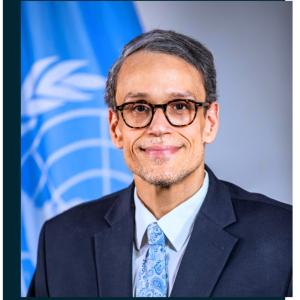The Director General of The National Centre For Arts and Culture, Director of the UNESCO Multisectoral Regional Office for West Africa ,The media and other invited guest. I am happy to be here today and deliver these remarks on this important occasion.
The Gambia has a deep and incredibly rich history dating back from proto historical times, as well as a very rich heritage: The Stone Circles of The Senegambia, one of The Gambia’s World Heritage sites, represent an extraordinary concentration of over 1,000 along the River Gambia, dating back from between 3rd and 16th century. They bear witness of the highly sophisticated social organizations that settled in The Gambia in the past and the enormous rich history this country has.
A country on the move, The Gambia is poised to benefit from a demographic dividend due to its youthful population which holds the key to its mid and long-term development. It is moving ahead in full swing in times of transition and change during key historical moments such as the witnessed in last and current months, which have positioned The Gambia as a model for transitioning societies, it is crucial to maintain the link with one’s own heritage, to safeguard the invisible ties that make up a cohesive society.
Supportive of this, the Government of The Gambia has placed Culture at the heart of the Gambia National Development Plan (2018-2021) and is developing public policies in line with this: such as the recent Tourism Policy and Strategy (2022-2032) and National Arts and Culture Policy (2019-2029), which establish a link between the country’s development and the protection, safeguarding and promotion of both tangible and intangible heritage. This is crucial and important to the work we do as the UN, this is why we continued to work closely with the NCAC through The International Trade Centre to support the creative industries and revive disappearing initiatives such as the kankurang festival in Janjanbureh.
Culture is indeed a cross-cutting driver for sustainable development, it contributes to reduce poverty (SDG1) through the creation of job opportunities in the cultural and tourism sectors (SDG 8), strengthens quality education (SDG 4), promotes social justice, and provides context-relevant responses for environmental sustainability (SDG 13). As captured in Aspiration 5 of the 2063 Agenda of the African Union, a continent with a strong cultural identity, common heritage, values and ethics will get us closer to the Africa We Want.
As Mr. Sanga has previously acknowledged, the contribution of culture to development surpasses the economic terms. In the case of intangible cultural heritage, it can harness different key pillars of development such as poverty reduction, wellness and health through the use of traditional knowledge for medicinal purposes or the sustainable management of land, food and water which are necessary for survival. It can also contribute to social cohesion and inclusion via traditional practices or community events, or to fighting climate change and reducing risks of disasters by harnessing the knowledge and respect for their land that communities have fueled for millennia.
By building the capacities of Gambian communities, government stakeholders and civil societies on the identification and safeguarding of their own living heritage, this project will allow the Gambian populations not to lose sight of the importance and value of the traditions that define them. It will also equip young people with tools to reconnect with their roots, which shall be used as a springboard to build a more sustainable Gambia in this time of change and opportunity.
In conclusion, I wish to thank Government through the ministry of tourism and culture for the continued partnership and wish to reiterate the UN’s continued commitment to supporting the development process of this country across all sectors.
Thank You for your kind attention


